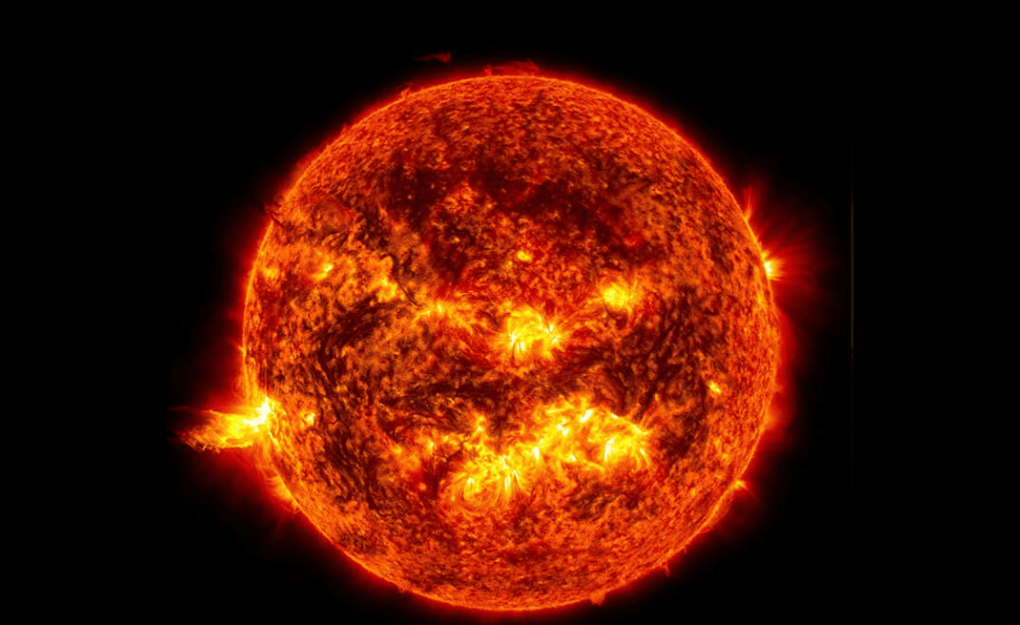Miniature Plasma Loops in Sun’s Atmosphere have recently been discovered by a team of astronomers, shedding light on one of the most enduring mysteries in solar physics — how the Sun stores and releases magnetic energy. These tiny plasma loops, which were previously undetectable, exist in the lower layers of the solar atmosphere and have the potential to transform our understanding of solar dynamics.
Using advanced telescopes and a multi-wavelength approach, researchers observed these elusive structures and examined their formation, scale, and behaviour. Their discovery has opened up a new frontier in the study of solar magnetism and plasma physics.
Structure and Scale of Miniature Plasma Loops in Sun’s Atmosphere
The Miniature Plasma Loops in Sun’s Atmosphere are extremely small, measuring just 3,000 to 4,000 kilometres in length and less than 100 kilometres in width. To put this into perspective, they are about the length of India from north to south, but incredibly narrow. These loops are located in the chromosphere, a layer just above the Sun’s visible surface, and are short-lived — existing for only a few minutes before disappearing.
This small size and rapid life cycle made the loops invisible to earlier generations of solar observation instruments. However, technological advancements have now made it possible to study these dynamic features in unprecedented detail.
Observational Techniques and Instruments
The breakthrough in identifying Miniature Plasma Loops in Sun’s Atmosphere came through the integration of data from multiple state-of-the-art instruments. Observatories like the Goode Solar Telescope (GST) at Big Bear Solar Observatory, NASA’s Interface Region Imaging Spectrograph (IRIS), and the Solar Dynamics Observatory (SDO) collaborated to provide a comprehensive view across visible, ultraviolet (UV), and extreme-ultraviolet (EUV) spectrums.
This combination of instruments enabled the observation of different layers of the solar atmosphere simultaneously. By using high-resolution imaging and spectroscopy, scientists were able to track the movement, shape, and energy dynamics of the plasma loops from the chromosphere to the outer corona.
Physical Characteristics and Magnetic Activity
Miniature Plasma Loops in Sun’s Atmosphere appear as luminous arcs, especially prominent in the H-alpha spectral line — an essential indicator of chromospheric activity. The loops demonstrate dynamic magnetic reconnection events, where complex magnetic field lines snap and reconnect, releasing energy in the form of plasma jets and heat.
Spectral broadening and brightening patterns suggest the presence of non-thermal processes — essentially, energy transformations not caused solely by temperature changes. This indicates a highly magnetic environment where rapid changes in energy state contribute to the Sun’s active behaviour.
Temperature and Plasma Dynamics
Plasma within these loops was found to reach extreme temperatures, ranging from one to several million degrees Celsius. Such intense heating in the chromosphere — a denser and typically cooler region — contradicts conventional expectations and poses a significant challenge for solar scientists.
The loops emit strongly in the extreme ultraviolet (EUV) range, highlighting intense localized heating. Scientists used Differential Emission Measure (DEM) techniques to calculate plasma temperatures and density profiles, confirming the unexpected thermal conditions inside these loops.
Future Prospects and Research
The discovery of Miniature Plasma Loops in Sun’s Atmosphere lays the foundation for future research in solar energy dynamics. As observation technology advances, instruments with higher magnetic field sensitivity and better resolution will deepen our understanding of these loops and their role in solar phenomena such as flares and coronal mass ejections.
India’s National Large Solar Telescope (NLST), a 2-meter aperture solar telescope proposed near Pangong Lake in Ladakh, is one such project. Once operational, it will offer sharper chromospheric images and enable more detailed studies of miniature magnetic structures.
Conclusion
The detection of Miniature Plasma Loops in Sun’s Atmosphere marks a major leap in solar science. These findings not only advance our understanding of the Sun’s magnetic energy release but also pave the way for predictive solar weather models that could one day protect satellites, astronauts, and Earth-based technologies from solar storms.




